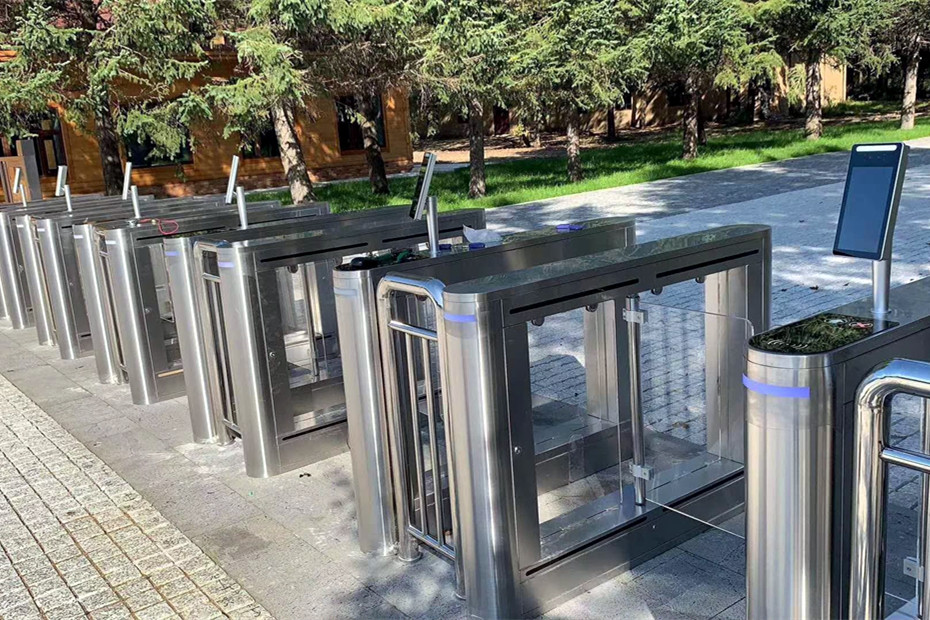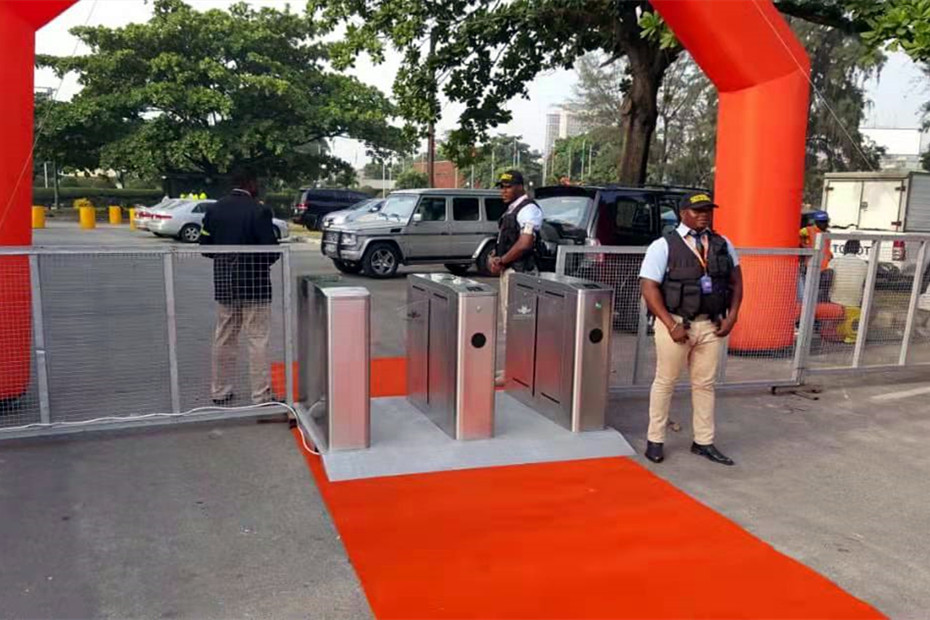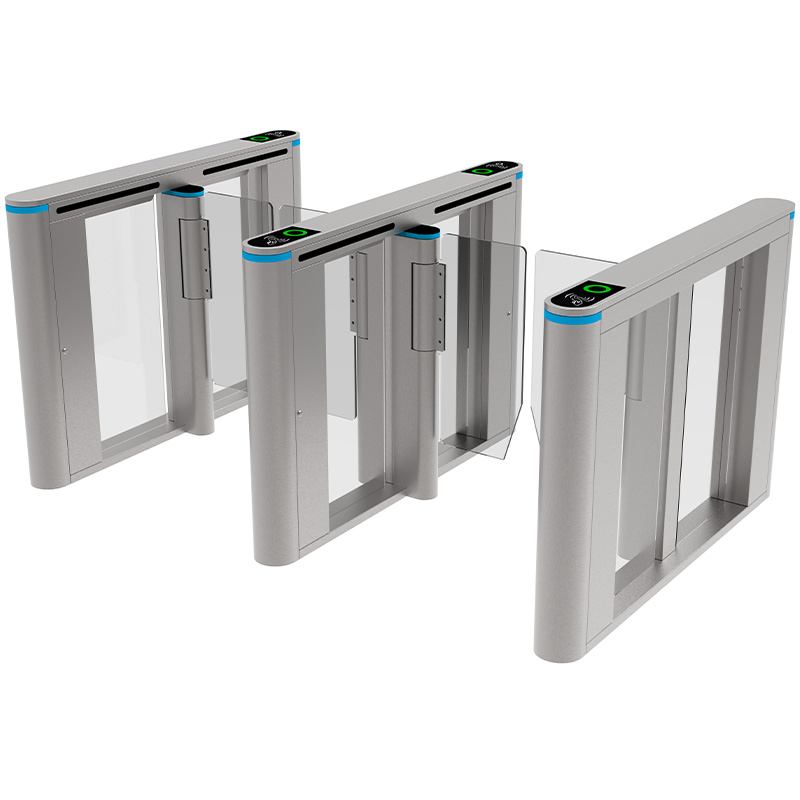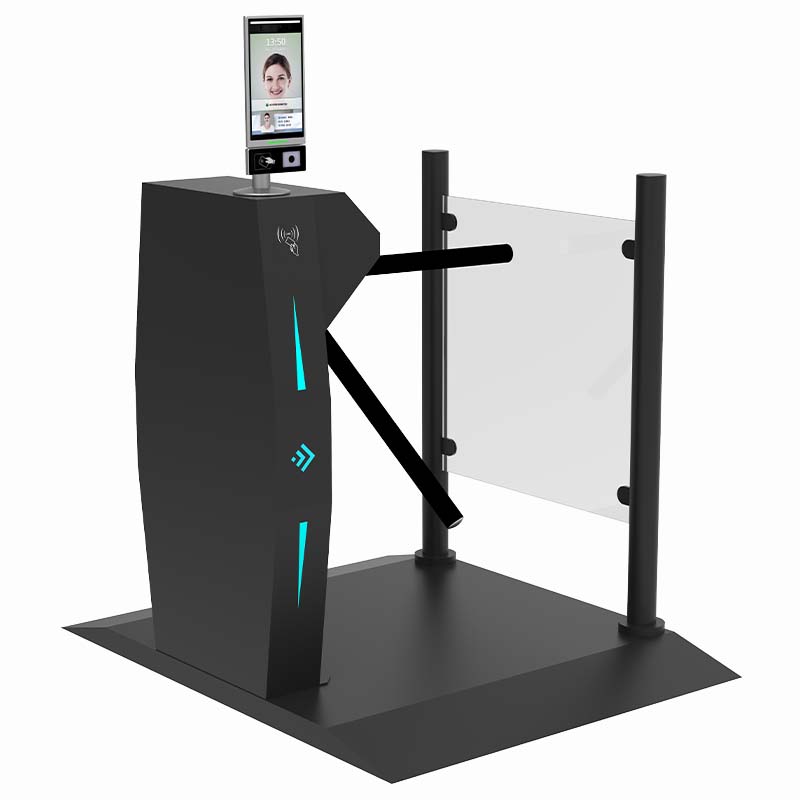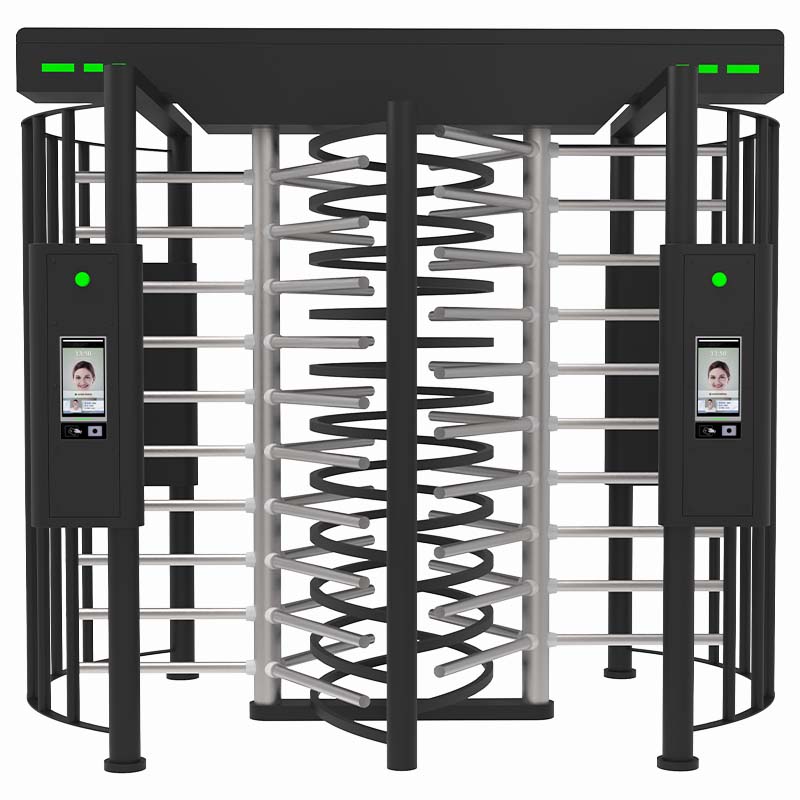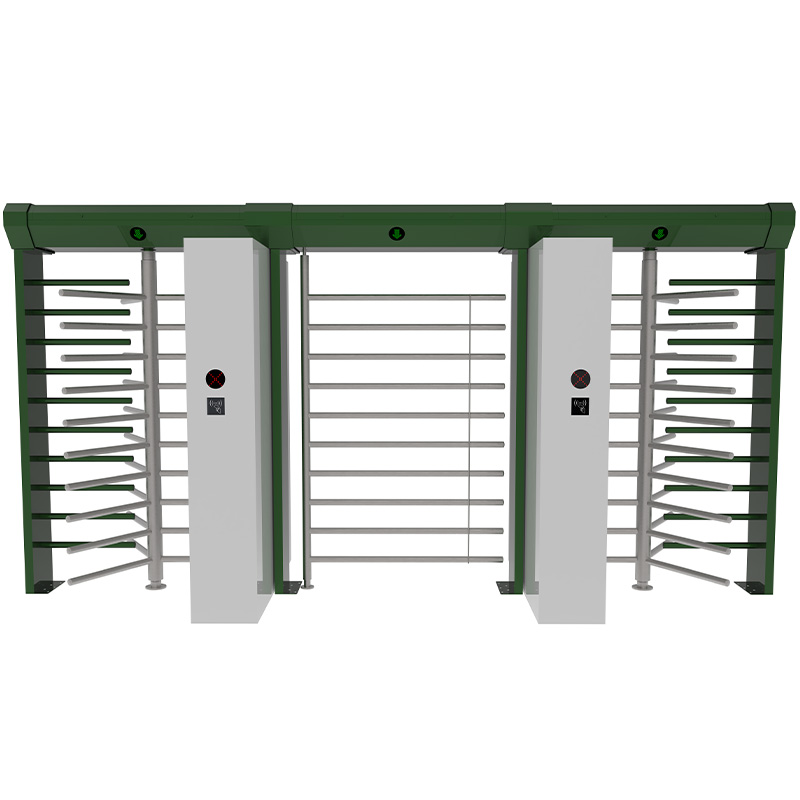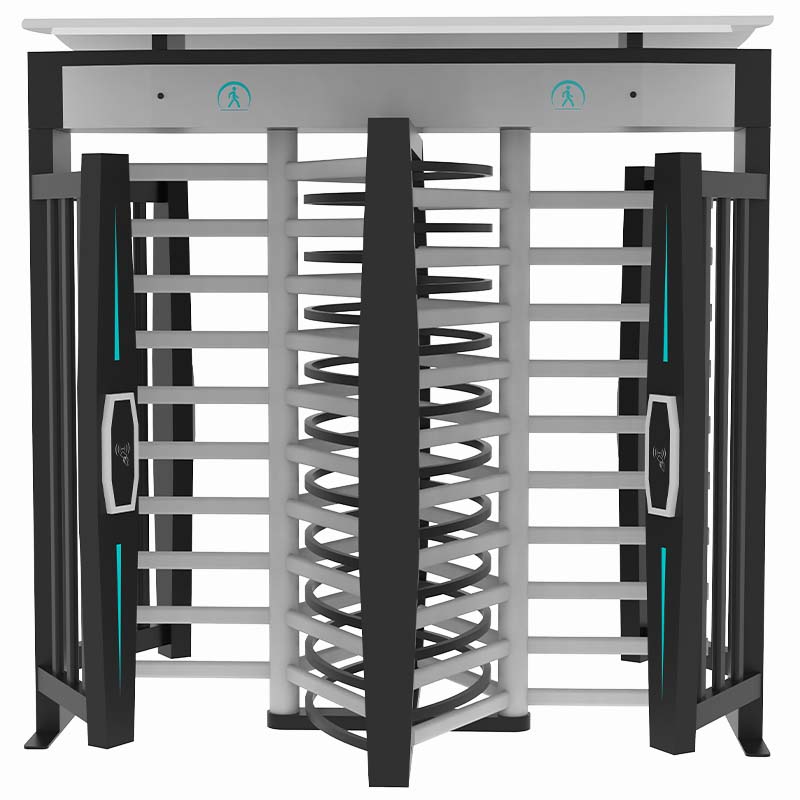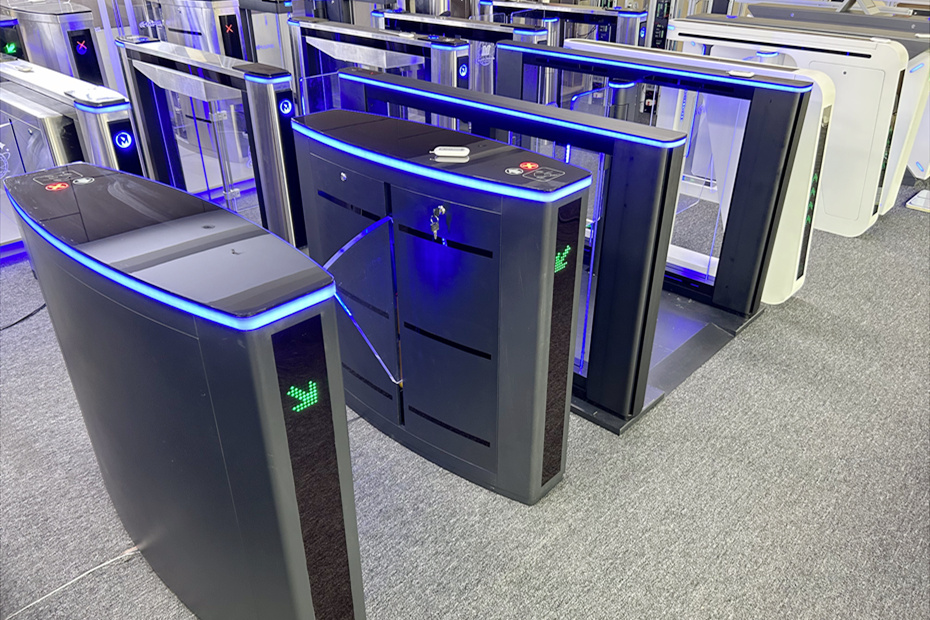Last updated on: April 9th, 2025 12:37 pm
What is an outdoor turnstile?
Outdoor turnstile is a type of access control turnstile designed for outdoor environments. Outdoor turnstiles have characteristics such as waterproofing, dust prevention, high-temperature resistance, and corrosion resistance to adapt to different climate conditions and environmental requirements.
Outdoor turnstiles help customers deal with extreme weather conveniently and without worry. The equipment can not only meet the normal passage of pedestrians, but also the design of widening and lengthening the passage is convenient for users to carry automatic vehicles and trolleys through, so as to avoid the damage caused by the wheel hitting the door wing in the short passage; At the same time, the outdoor turnstile design appearance is more atmospheric, making it close to the volume feeling of outdoor space and coordinated.
Waterproof standards & requirements
The waterproof standard for outdoor turnstiles generally adopts international waterproof rating standards, usually described as the IP (Ingress Protection) standard. The waterproof rating of exterior turnstiles refers to the ability of their shell to protect, and the commonly used waterproof ratings in outdoor turnstiles are IP65 and IP66. This level consists of two digits, where the first digit represents the protection level for solids, and the second digit represents the protection level for liquids.
For example, IP65 indicates complete prevention of foreign object intrusion and can prevent sprayed water from entering. For most indoor turnstiles, a waterproof rating of IP54 or above is usually sufficient as it can protect the turnstile from dust and splashes. However, for outdoor turnstiles, especially those installed in rainy or snowy areas, higher waterproof ratings such as IP65 or IP66 may be required.
So what are the waterproof requirements for outdoor turnstiles to meet the waterproof needs?
1. Good enclosure structure: By optimizing material design, the enclosure’s enclosure is ensured. The shell must be perfectly seamless to avoid water ingress.
2. Waterproof sealing: Seal the outer shell of the gate with silicone to prevent rainwater from entering and coming into contact with internal components. In addition, drainage holes must be installed inside the gate to avoid water leakage caused by internal pressure differences.
3. Waterproof cable interface: The cable interface of the gate must undergo waterproof treatment and be firmly and reliably sealed with waterproof rubber strips to prevent water absorption and invasion at the cable interface.
4. Moisture proof design: Moisture proof treatment must be carried out inside the gate. On the one hand, the interior of the equipment should be sealed and protected, and on the other hand, the gate should be ventilated regularly to expel humid air from the interior.
5. Seismic design: In some areas where the climate is unstable, the turnstile gate needs to have a seismic design. Install shock-absorbing pads inside the turnstile gate, and also match shock-absorbing pads at the foot of the turnstile gate.
The waterproof level of the outdoor turnstile gate is one of its important performance indicators, and outdoor turnstiles must have good waterproof performance, otherwise they cannot adapt to complex and changing outdoor environments. Choosing the appropriate waterproof level can ensure that the outdoor turnstile gate can operate stably in various environments. At the same time, we also need to comprehensively consider other technical indicators of the turnstile gate to meet practical application needs.
Why can outdoor turnstiles be used outdoors?
The pedestrian turnstile gate installed outdoors should achieve waterproof and sun protection functions, and ensure that it can be used normally. As a professional turnstile manufacturer, how can we ensure that outdoor turnstiles can be used outdoors? how to ensure that exterior turnstiles can be used normally outdoors? We can mainly achieve this through the following aspects:
1. Selection of waterproof materials: The outer chassis of the exterior turnstile gate should be made of materials with good waterproof performance, such as waterproof plastic or stainless steel (such as 304 stainless steel), which can effectively prevent moisture from penetrating into the interior of the equipment, and also have certain sun protection properties, corrosion resistance, wear resistance, and high temperature resistance.
Outdoor turnstiles are usually made of 304 stainless steel. Of course, if you have higher requirements for product materials, you can also ask us to customize special 316 stainless steel materials. 304 and 316 are classified as stainless steel. There is no difference in essence. They are stainless steel, but there are differences in the subdivision.
The quality of 316 is higher than that of 304. 316 steel is added with Mo element on the basis of 304, This element greatly improves the corrosion and wear resistance of stainless steel. Of course, 316 stainless steel is a little more expensive. MairsTurnstile has customers in Dubai, UAE, and Riyadh, Saudi Arabia, who have specially customized 316 stainless steel full-height turnstiles to adapt to more extreme weather and environments.
2. Sealing design: At the joints of the outdoor turnstile gate, such as the connection between the chassis and components, waterproof rubber strips, sealants, and other materials should be used for sealing treatment to ensure that these parts do not become channels for moisture infiltration. This design not only provides waterproofing, but also reduces the damage of ultraviolet rays to internal components to a certain extent.
For key components such as motors and sensors, they should be sealed more tightly to prevent the intrusion of rainwater and sandstorms. The sealing design of these components can effectively extend their service life and reduce maintenance costs.
3. Drainage system: Design a reasonable drainage system at the bottom of the outdoor turnstile gate to ensure that rainwater and other liquids can be quickly discharged from the equipment, avoiding damage caused by accumulated water. This design is crucial for preventing long-term water accumulation from eroding the internal circuit of the turnstile gate.
When using the turnstile gate in outdoor, humid, and water-prone environments, a cement base of 100mm or more (depending on the height of the water accumulation) should be constructed, and the passage should also be raised synchronously. The gap between the cement base and the turnstile gate should be sealed with waterproof materials such as silicone, and waterproof and anti-condensation measures should be taken.
4. Regular maintenance: In addition to the above hardware measures, regular maintenance is also an important part of maintaining the waterproof and sun protection performance of the gate. This includes regularly cleaning the dust and dirt on the surface of the equipment, checking the integrity of the seals, and promptly replacing damaged parts to ensure consistent waterproof and sun protection effects of the turnstile gate.
5. Installation location and environmental considerations
When choosing the installation location, try to avoid direct exposure to sunlight to reduce the damage of ultraviolet rays to the equipment.
Set up reasonable shelters or greenery around the equipment to reduce the direct impact of rainwater and sun exposure.
6. Waterproof construction specifications
During the installation process, for areas that require gluing, such as cable interfaces, bracket mounting holes, etc., it should be ensured that the gluing is full, uniform, and without gaps.
When gluing and sealing, materials with good waterproof performance and strong weather resistance, such as silicone, should be used.
By selecting waterproof materials, sealing design, drainage system, and regular maintenance measures, the waterproof and sun protection function of pedestrian turnstiles installed outdoors can be effectively achieved, extending their service life and ensuring their normal operation.
Outdoor turnstile Features:
Outdoor turnstiles are specifically designed to meet the challenges posed by outdoor environments, Therefore, in some places or by some people, it is called exterior turnstiles. Here are some notable features of the exterior turnstiles:
Weather Resistance:
Outdoor turnstiles are built to withstand various weather conditions, including rain, snow, high temperatures, and UV exposure. Their robust construction ensures reliable operation in different outdoor environments.
Exterior turnstiles are designed to operate effectively in harsh conditions, such as extreme temperatures, high humidity, and exposure to dust and debris. The materials used are selected for their durability and resistance to corrosion. So exterior turnstile has durability under harsh conditions.
Sunlight in outdoor environments can interfere with sensors and infrared technology. Exterior turnstiles are equipped with structural designs to minimize the impact of direct sunlight on sensors, reducing the chances of false alarms and ensuring accurate detection.
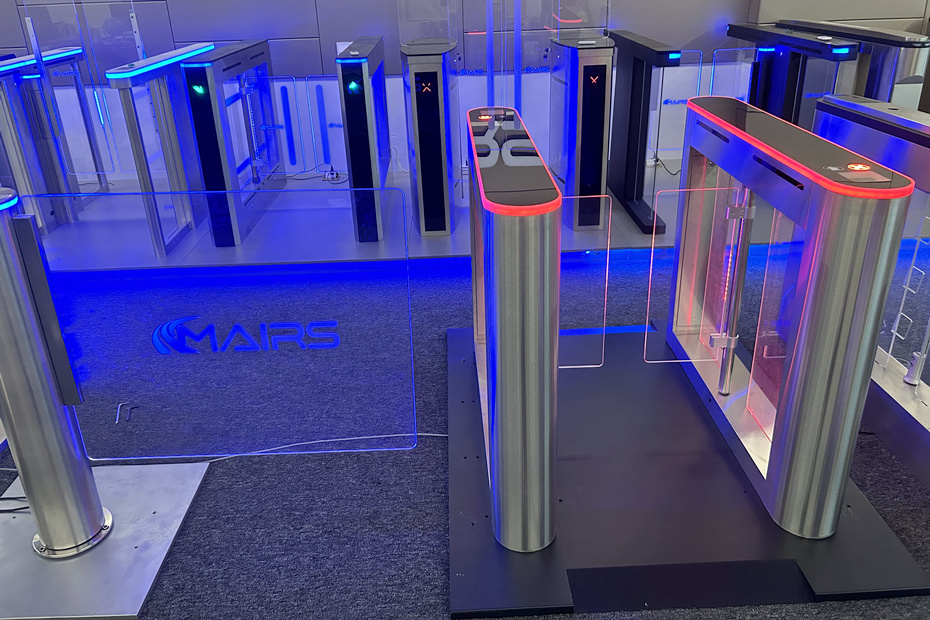
Temperature Resistance:
The specified working temperature range of -40°C to 70°C makes the turnstile resilient in extreme weather conditions, ensuring functionality even in very low or high temperatures.
Outdoor turnstiles are equipped with heat dissipation systems to prevent overheating during prolonged exposure to high temperatures. This helps maintain the optimal operating temperature for the turnstile mechanism and electronic components.
Condensation Resistance:
To prevent the formation of condensation inside the turnstile, which can lead to malfunctions, exterior turnstiles should be designed with measures to manage humidity effectively.
Anti-Electric Shock:
Outdoor turnstiles should incorporate measures to prevent electric shock hazards. This is especially important in outdoor environments where the turnstile may be exposed to moisture.
Strong resistance:
Outdoor environments may be more susceptible to vandalism. Outdoor turnstiles are designed with features that enhance resistance against tampering, unauthorized access attempts, and physical damage.
Long service life:
The materials and coatings used in outdoor turnstiles are selected to withstand environmental challenges, ensuring a longer lifespan for the equipment. This contributes to cost-effectiveness and reduces the need for frequent replacements or repairs.
Integration with Access Control Systems:
Outdoor turnstiles seamlessly integrate with access control systems, allowing for centralized management of access permissions, credentials, and security protocols. This integration enhances overall security measures in outdoor environments.
Exterior turnstiles act as a physical barrier to prevent unauthorized access to restricted areas. They contribute to overall security by ensuring that only individuals with valid credentials or permissions can enter specific outdoor spaces.
The design and features of exterior turnstiles make them essential for creating secure and controlled access points in outdoor environments, ensuring efficient and reliable operation despite challenging weather and environmental conditions.
How to choose an outdoor turnstile?
The selection criteria for outdoor turnstiles are crucial to ensure their effective operation in challenging outdoor environments. Here are key criteria to consider when purchasing an exterior turnstile:
Material and Construction:
Choose outdoor turnstiles constructed from high-quality, corrosion-resistant materials such as 304 stainless steel. The choice of materials contributes to both durability and appearance. These materials are durable and can withstand outdoor conditions. Ensure that the turnstile’s construction is sturdy and able to withstand external forces.
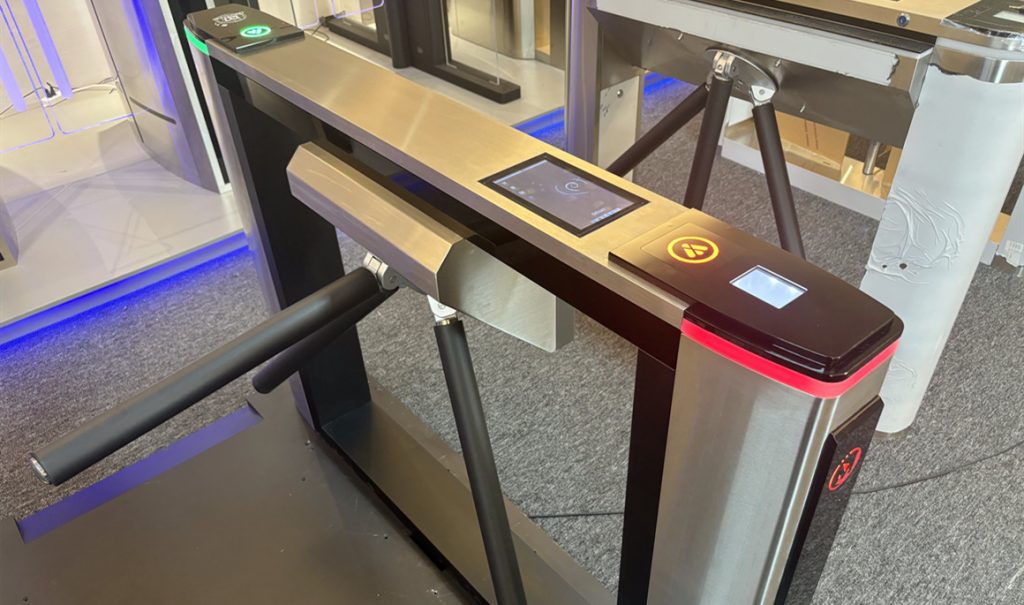
Anti-Corrosion Measures:
Ensure that the turnstile has anti-corrosion measures in place, especially if it will be exposed to salt water or harsh chemical environments.
IP Rating:
Check the Ingress Protection (IP) rating of the turnstile. Higher IP ratings indicate better protection against dust and water ingress.
Ease of Maintenance:
The turnstile should be capable of providing stable and reliable operation over an extended period, even under continuous exposure to outdoor conditions. This reduces maintenance requirements and ensures long-term performance.
Choose turnstiles with designs that facilitate easy maintenance. Quick access to internal components and simple cleaning procedures are beneficial for outdoor installations.
Integration with Access Control:
Ensure that the outdoor turnstile can integrate seamlessly with your access control or security system, providing a comprehensive solution for outdoor access management.
Lighting and Visibility:
Consider turnstiles with built-in lighting features or options for integrating external lighting. This enhances visibility and security, especially during low-light conditions.
Customization:
Some outdoor environments may have specific requirements. Choose turnstile providers that offer customization options to meet the unique needs of your outdoor space.
Manufacturer Reputation:
Select outdoor turnstiles from reputable manufacturers known for producing reliable and high-quality access control products. Consider the manufacturer’s track record and customer reviews.
By carefully considering these criteria, you can choose outdoor turnstiles that not only meet environmental challenges but also provide robust safety features and long-term stability for effective access control in outdoor settings.
Outdoor turnstile water inlet treatment method
1. Immediately cut off power
Once water enters the outdoor turnstile gate, the first step is to cut off the power supply. This includes disconnecting the power supply directly connected to the exterior turnstile gate, as well as the power supply of the associated safety or monitoring system. To ensure that a wider range of accessory damage is caused.
Before the operation, ensure your safety and avoid contact with outdoor turnstiles while the power is still on to prevent an electric shock.
2. Remove accumulated water
If it is due to accumulated water that causes water to overflow into the waterproof bottom layer of the outdoor turnstile gate, leading to water ingress and malfunction of the outdoor turnstile gate, tools such as water pumps and water suction devices can be used to accelerate the drainage speed and reduce the erosion time of water on the outdoor gate circuit.
If conditions permit, the exterior turnstile gate can be moved away from the flooded area and placed at an angle to use gravity to help drain water.
3. Drying treatment
On the premise of ensuring safety, the outdoor turnstile gate cover can be opened to allow the interior to air dry naturally.
Then, use a low-temperature hair dryer to dry the inside, but be careful to maintain a certain distance to avoid high temperature damage to electronic components.high-temperature
4. Cleaning and inspection
Gently wipe the circuit board and other electronic components with anhydrous alcohol or other suitable cleaning agents to remove water stains and dirt. After drying, carefully inspect the circuit board, connectors, motors, and other components for corrosion, short circuits, or other damage.
5. Repairing or replacing components
After drying and cleaning, reconnect the power and try to start the outdoor turnstile gate. At this point, it is necessary to check the various functions of the exterior turnstile gate, including the card reader, recognizer, door controller, etc., to ensure that they are all working properly. If any functional abnormalities or performance degradation are found, further repair or replacement may be necessary.
For minor corrosion or damage, simple repairs can be carried out, such as rust removal on the corroded parts of the outdoor turnstile gate machine case.
For severely damaged components such as circuit boards, motors, or other accessories, it is recommended to contact specialized maintenance personnel for replacement.
6. Retest and restore usage
After repairing or replacing components, conduct functional testing to ensure that all functions of the outdoor turnstile gate are normal.
After completing the maintenance test, the outdoor turnstile gate can be restored for use.
Preventive measures for outdoor turnstile water ingress
Waterproof design: In installation or renovation, consider using waterproof design, such as IP65 rated enclosures.
Regular inspection: Strengthen the daily inspection and maintenance of outdoor turnstiles, especially before and after the rainy season, and promptly eliminate hidden dangers.
Installation of waterproof facilities: For areas prone to water ingress, waterproof covers or sealing rings can be installed to improve waterproofing capabilities. You can also install a rain shelter above the exterior turnstile gate.
Installation of cement base: When using outdoor turnstile gates in outdoor or water prone environments, a cement base should be constructed and the gap between the base and the gate should be sealed with waterproof materials such as silicone.
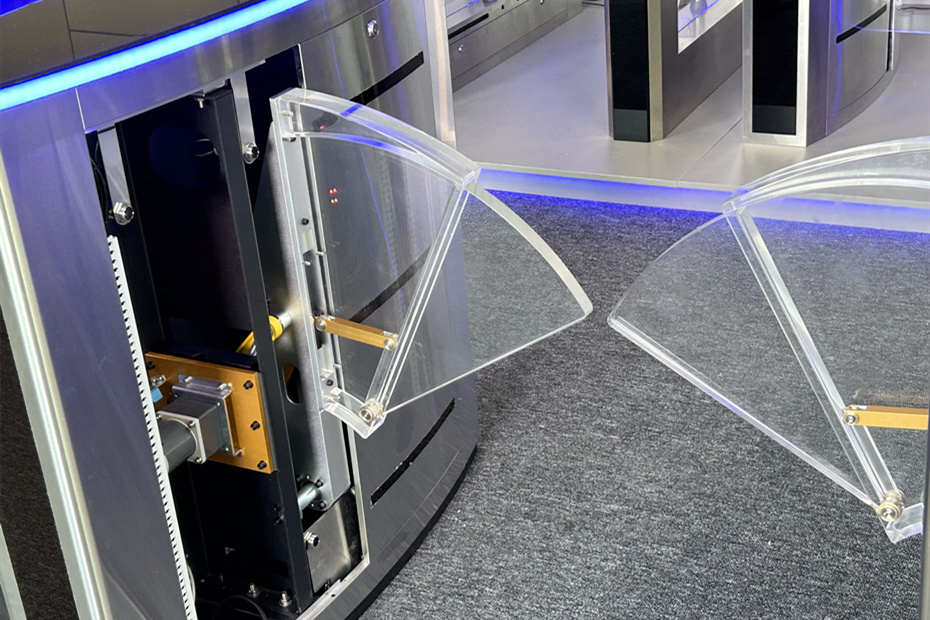
Types of outdoor turnstiles:
Various types of turnstiles (tripod turnstile gate, swing turnstile gate, flap barrier gate, sliding turnstile, full height turnstiles, etc.) can be made into outdoor turnstile machines.
Swing Turnstile Gate:
Advantages:
Diverse design options for appearance.
Strong durability with dust-proof and waterproof grade IP65.
High-temperature and low-temperature resistance.
Suitable for unattended management in harsh weather conditions.
Use Cases:
Large factories, enterprise parks, and outdoor environments face rain, sunshine, and dust.
Flap Barrier Gate:
Advantages:
Emphasis on speed, making it suitable for large personnel flow.
Continuous improvement in technology for enhanced performance.
Designed for users prioritizing beauty and efficiency.
Use Cases:
Locations with a focus on speed, such as areas with a high volume of people.
Tripod Turnstile Gate:
Advantages:
Cost-effective solution.
Suitable for users with budget constraints.
Provides performance efficiency.
Variants:
Vertical Tripod Turnstile Gate: Occupies a smaller area and saves space.
Bridge Tripod Turnstile Gate: Compatible with outdoor environments, especially with dust and waterproof features.
Use Cases:
Outdoor scenes like swimming pools, communities, and workplaces where cost is a significant consideration.
Full height turnstile:
Advantages:
The highest level of security.
High Throughput: While providing robust security, full-height turnstiles can still facilitate the efficient flow of authorized pedestrians. This is beneficial in scenarios where a significant number of people need to pass through the turnstile quickly.
An outdoor full-height turnstile is a kind of full-height turnstile gate that can be used outdoors. The outdoor full-height turnstile has good waterproof performance. At the same time, a waterproof design is also adopted inside the products, so that the outdoor full-height turnstile can also show good functional characteristics in a harsh outdoor environment.
These solutions cater to different user needs based on factors such as appearance preferences, weather resistance, speed requirements, and budget constraints. Offering diverse options allows users to choose the most suitable outdoor turnstile type based on their specific use cases and priorities.

Installation precautions:
The installation of outdoor turnstiles requires careful consideration of various factors to ensure proper functioning, stability, and durability. Here are key points to keep in mind during the installation process:
Waterproof Treatment:
Pay attention to waterproof treatment during installation to avoid the turnstile being soaked by rain.
Avoid placing the turnstile in low-lying areas to prevent water accumulation.
Platform Construction:
Consider making a cement platform under the exterior turnstile gate to enhance waterproofing.
Use powdered hydraulic inorganic cementitious material for platform construction.
Fixation:
Securely fix the outdoor turnstile gate to the ground to prevent shaking during use.
Unstable movement can reduce the gate’s stability and overall lifespan.
Wiring:
Use a 6-point galvanized pipe for embedded conduit, ensuring stability.
Choose high-quality national standard cables for power lines, network cables for communication lines, and switch control lines.
Divide conduit wiring into strong current and weak current wiring.
Conduit Wiring:
Buy adapters, two-way, and three-way connectors for conduit wiring.
For dark wire wiring, ensure the pipe head is flat with the ground, and reserve space for other wires.
Cement Burying:
When burying cement, be cautious not to move the wire pipe.
Ensure tight underground wiring to prevent water seepage and corrosion of wire rods.
Screw Hole Drilling:
Align the outdoor turnstile gate and mark screw hole positions.
Drill holes using a bayonet wrench, fix screws, and apply glass glue to prevent water seepage.
Gate Extension:
Apply glass glue to the gate extension to prevent water seepage.
Waterproof Mechanism:
Ensure the turnstile gate has a waterproof mechanism.
Seal the main shaft of the mechanism, motor main shaft, chassis, and mechanism with sealant or sealing strips.
Additional Considerations:
Apply waterproof and sunscreen treatment before installation.
Seal joints of the turnstile chassis with glass glue to prevent moisture intrusion.
Use waterproof boxes for the electric control part inside the cabinet.
Ensure infrared radiation of the detection part effectively prevents interference from sunlight.
Ground Level Elevation:
Raise the original ground level by approximately 10cm during installation.
Lay waterproof materials at the bottom of the turnstile gate to reduce water immersion during rainstorms.
Safety Hazards:
Eliminate potential safety hazards around the installation location to prevent damage from heavy objects during windy weather.
By adhering to these guidelines, the installation of exterior turnstiles can be optimized for longevity, functionality, and resistance to environmental conditions.
